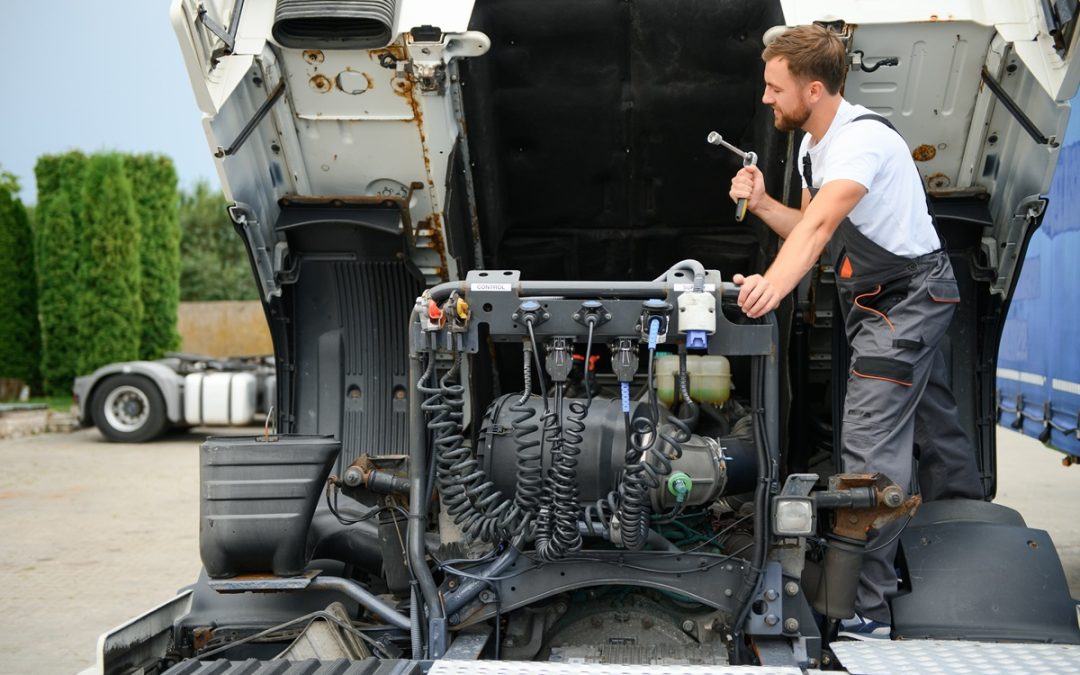In the dynamic world of fleet management, the dawn of Artificial Intelligence (AI) and its integration into predictive maintenance practices stands as a testament to technological advancement and operational efficiency. We are at the cusp of a new era, where AI’s capabilities in diagnosing and maintaining fleet health promise not only to reduce costs but also to significantly diminish the frequency of unnecessary repairs caused by misdiagnosis.
Current Landscape: The Role of Computers in Diagnostics
Traditionally, the reliance on manual diagnostics has posed challenges, including time consumption and error proneness, leading to increased operational costs and downtime. The advent of computer-assisted diagnostics marked a significant shift, providing a more accurate, swift, and efficient way of identifying issues. However, this is just the beginning. The real transformation is being ushered in by AI, which takes diagnostics and maintenance from reactive to predictive, setting a new standard in the industry.
AI in Action: Transforming Predictive Maintenance
AI-driven predictive maintenance is transforming fleet management by leveraging data analytics and machine learning to predict equipment failures before they happen. This proactive approach allows for the scheduling of timely maintenance, thereby avoiding costly downtime and extending the lifespan of fleet vehicles.
Cost Reduction and Efficiency Enhancement
One of the most compelling advantages of AI in predictive maintenance is the substantial cost savings it offers. By accurately predicting potential failures, AI minimizes the occurrence of unplanned repairs and maintenance, which are often more expensive and time-consuming. This not only reduces operational costs but also enhances overall efficiency.
Accuracy in Diagnostics
The precision of AI-powered diagnostics tools surpasses traditional methods, significantly reducing the likelihood of misdiagnosis. By analyzing vast amounts of data and learning from each interaction, AI algorithms provide highly accurate maintenance recommendations, ensuring that vehicles receive the right service at the right time.
Streamlining Repair Shop Operations
AI’s impact extends into the repair shop, where it streamlines operations by optimizing repair schedules, managing parts inventory, and improving communication between technicians. This results in a more organized, efficient repair process that can adapt to the changing needs of the fleet.
Predictive Maintenance: AI Versus Conventional Methods
The distinction between AI-driven predictive maintenance and conventional methods is stark. While traditional approaches rely on scheduled maintenance or reactive repairs, AI anticipates issues, allowing for interventions that prevent breakdowns and enhance vehicle performance. This forward-thinking approach marks a significant leap towards maximizing operational uptime and fleet reliability.
Evolving with Fleet Needs
AI’s predictive maintenance capabilities are not static; they evolve with the fleet. Through continuous learning and adjustment, AI models become increasingly refined, providing tailored maintenance schedules that align with each vehicle’s specific needs and usage patterns. This dynamic adaptability ensures that predictive maintenance strategies remain effective and relevant, offering sustained operational benefits.
Empowering Fleet Managers with Data-Driven Insights
AI equips fleet managers with valuable insights derived from the analysis of historical and real-time data. This empowers them to make informed decisions about fleet maintenance, optimizing operations, and planning for the future. The transparency and depth of information provided by AI facilitate a strategic approach to fleet management, driving efficiency and productivity.
Overcoming Challenges: The Path to Integration
The integration of AI into predictive maintenance is not without its challenges. These include navigating the complexities of data management, ensuring the accuracy of AI predictions, and addressing the need for ongoing technician training. However, these hurdles are surmountable with a strategic approach that emphasizes collaboration, flexibility, and a commitment to innovation.
The Synergy of AI and Human Expertise
The true potential of AI in fleet maintenance is realized when it is combined with human expertise. This synergistic relationship enhances the decision-making process, ensuring that the nuanced realities of fleet operations are considered alongside AI’s data-driven insights. Together, AI and human expertise form a powerful alliance that navigates the intricacies of fleet maintenance with precision and foresight.
Conclusion: Navigating the Future with AI
The integration of AI into predictive maintenance heralds a transformative era for fleet management. As technology advances, the role of AI will only grow, offering new opportunities to enhance operational efficiency, reduce costs, and improve vehicle longevity. By embracing AI and fostering a culture of innovation, fleet managers can navigate the complexities of modern fleet maintenance with confidence, setting a new benchmark for operational excellence in the industry.

